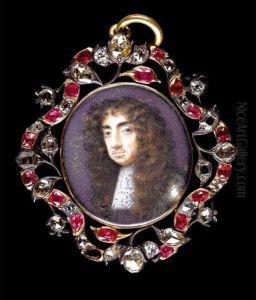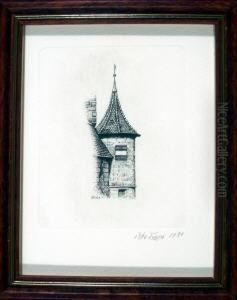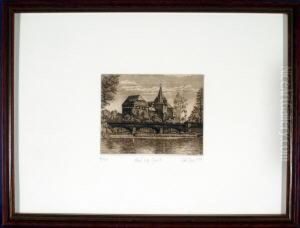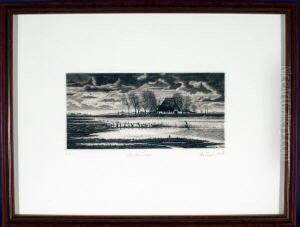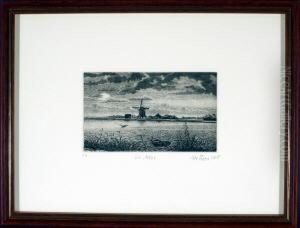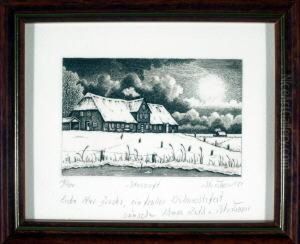Peter Crosse Paintings
Peter Crosse, also known as Peter Cross, was an English portrait miniaturist born in 1647, whose career flourished during the late 17th and early 18th centuries. His life and work are situated within the Baroque period, a time characterized by grandeur, drama, and detail in the arts, which influenced Crosse's approach to portraiture. Unfortunately, there is not an extensive amount of information readily available about Crosse's personal life or training, which is common for artists of this period outside the most famous circles.
Crosse is best known for his detailed and finely rendered portrait miniatures, which were a popular art form among the English aristocracy and gentry. These miniature portraits were often worn as pieces of jewelry, such as brooches or lockets, or kept in small, intimate settings for personal viewing. Crosse worked primarily in watercolors on vellum, a typical medium for miniaturists of his time, and his work was recognized for its delicate handling and lifelike quality.
During his career, Crosse competed with other notable miniaturists, such as Samuel Cooper, who was considered the leading portrait miniaturist in England during the middle of the 17th century. Despite the competition, Crosse maintained a successful practice, and his clientele included several high-profile figures. His portraits were appreciated for their refinement, attention to detail, and the ability to capture the character and essence of his subjects.
Crosse's contributions to the art of miniature painting were significant during his lifetime, and his works can be found in various museum collections, including the Victoria and Albert Museum in London. His death in 1724 marked the end of a lengthy career, with his legacy carried on by the students he taught and the works he left behind. While not as widely recognized today as some of his contemporaries, Crosse's artistry is nonetheless an important part of the history of English portrait miniatures.
